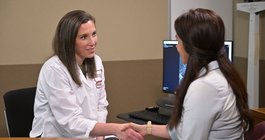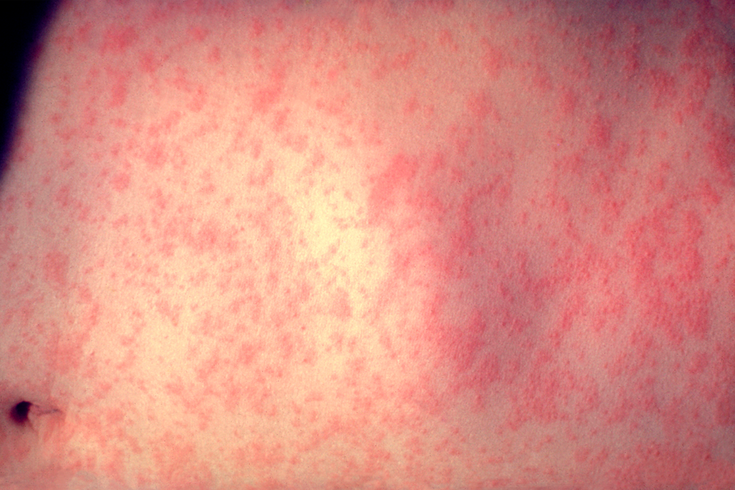
April 29, 2019
 Dr. Heinz F. Eichenwald/CDC
Dr. Heinz F. Eichenwald/CDC
A skin rash on a patient's abdomen three days after the onset of a measles infection.
Measles has reached levels not seen for 25 years in the United States.
The 704 measles cases reported to the U.S. Center for Disease Control and Prevention so far this year are the highest total since 1994, when 963 cases were reported.
And there's still eight more months to go – with no sign that measles activity is abating.
Of the 704 cases, 503 – or 71 percent – were among unvaccinated people, according to the CDC. The vaccination status of another 125 people was not known. Only 76 people – 11 percent of all cases – had been vaccinated.
Thanks to vaccination, measles was eliminated in the United States in 2000. But outbreaks can still occur when people contract the disease internationally and then enter the United States.
The highly contagious virus lives within the nose and throat mucus and spreads through coughing and sneezing.
There have been 66 hospitalizations due to measles, according to the CDC. No deaths or encephalitis cases – a potentially life-threatening complication associated with the disease – have been reported.
Measles cases have been reported in 22 states, including New Jersey. There have been 13 outbreaks, including one in Los Angeles, where two universities imposed quarantines last week.
Six of the outbreaks have come among tight communities with large portions of unvaccinated people. According to the CDC, those outbreaks have accounted for 88 percent of all measles cases in the country.
The disease is so contagious that up to 90 percent of the people close to an infected person will become infected – if they have not been immunized, according to the CDC. The virus can live for up to two hours in the airspace where an infected person sneezed or coughed.
Two doses of the measles, mumps and rubella (MMR) vaccine is about 97 percent effective at preventing the virus, according to the CDC. Most people born after the late 1980s have received two doses. Prior to that children typically received one dose, which is about 93 percent effective.
The majority of cases – about 67 percent – stem from New York, where outbreaks particularly have affected unvaccinated members of Orthodox Jewish communities in Brooklyn and Rockland County.
This year, 44 measles cases were directly imported from other countries, according to the CDC, including 34 from U.S. residents traveling internationally.
Symptoms typically appear about 7 to 14 days after a person is infected. They include high fever, cough, runny nose and red, watery eyes. Several days later, tiny, white spots may appear inside the mouth. A rash also will develop, beginning on the face and spreading downward.